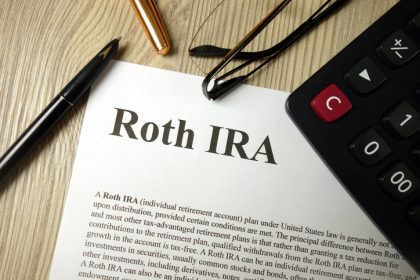You may be well into your career by age 35 but still years away from retirement, making it a common checkpoint for assessing your 401(k) progress. According to Fidelity, the average 401(k) balance for people in their mid-to-late thirties was $73,200 at the end of 20241. But averages don’t tell the whole story: how much you should have saved depends on factors like your income, lifestyle goals and how consistently you’ve contributed. Understanding where you stand now can help you decide whether you’re on track or might want to adjust your savings approach.
What Your Retirement Savings Should Look Like by Age 35
Understanding how your 401(k) balance compares to national trends can provide useful context. Fidelity reports that the average 401(k) balance for individuals aged 35 to 39 is $73,200. Vanguard data from 2024 offers a broader view: for account holders aged 25 to 34, the average 401(k) balance was $42,640 and the median was $16,255; for those aged 35 to 44, the average was $103,552 with a median of $39,9582. These wide gaps between median and average highlight how a small share of high-balance savers skews the numbers upward.
Federal Reserve data from the 2022 Survey of Consumer Finances3 also shows significant variation. Households headed by someone under 35 had an average retirement account balance of $49,130 and a median balance of $18,880. For those aged 35 to 44, the average and median account balances rose to $141,520 and $45,000, respectively. A 35-year-old sits at the crossroads of both categories, so it may be helpful to consider both sets of figures when gauging your position.
These data points don’t offer a personalized target, but they do show how savings typically grow over time. Whether you’re closer to the lower or higher end may reflect factors like when you started contributing, how consistently you’ve saved and how your investments have performed.
Benchmarks to Guide Your Strategy
Benchmarks can help you evaluate your savings progress without relying solely on peer comparisons. One widely cited framework comes from Fidelity, which recommends saving at least 1x your annual salary by age 30, 3x by 40 and 6x by 50, assuming retirement at 67. That means, by age 35, you should aim to have approximately 1.5x your salary saved for retirement.
These milestones are based on models that factor in consistent saving, compounding growth, and gradual income increases. Other firms, like T. Rowe Price and JPMorgan, publish similar models with slightly different multipliers or assumptions about retirement age and lifestyle.
These benchmarks are not forecasts. They don’t account for economic downturns, job changes or variations in personal spending habits. Instead, they provide a general guide, helping you estimate whether your current saving rate will support your desired retirement timeline. They’re most useful when paired with a personalized savings rate. For example, Vanguard recommends saving 12% to 15% of your gross income annually, including employer contributions, to stay on pace.
Another approach is to focus on the projected replacement rate: the percentage of your pre-retirement income you want to replace in retirement. A typical goal is 70% to 80%, though it can vary. Using retirement calculators or Monte Carlo simulations can help translate these benchmarks into more specific, actionable savings targets. The further you are from retirement, the more flexibility you have to adjust your strategy to align with your goals.
How to Catch Up and Reach Your Savings Goals

Falling behind on retirement savings doesn’t mean you’re out of options. Whether you’re playing catch-up after years of low contributions or responding to a late start, there are ways to make meaningful progress.
Increase Your Contribution Rate
At 35, you still have three decades or more before retirement, which means time is on your side if you act now. Try increasing your contribution rate by 1% or 2% each year until you reach 15% or more of your gross income. Many 401(k) plans offer auto-escalation features, but even a manual bump each January can build momentum.
Maximize Employer Matches
If you’re not contributing enough to get your full employer match, adjust your contributions as soon as possible. For someone earning $70,000, missing a 3% match could mean forfeiting $2,100 in free retirement savings each year. Over decades, that adds up.
Redirect Windfalls and Raises
When you receive a tax refund, work bonus or annual raise, allocate a portion of it toward your 401(k) or IRA. For a 35-year-old, investing a $3,000 bonus could grow to nearly $23,000 by age 65, assuming 7% annual growth. Prioritizing retirement over lifestyle inflation can meaningfully close savings gaps.
Reevaluate Investment Allocations
With 30+ years until retirement, a 35-year-old can often afford to take more investment risk than older savers. If your portfolio is too conservative, consider shifting toward a higher allocation of equities, which tend to offer greater long-term returns. A target-date fund designed for your retirement year can also provide an age-appropriate mix.
Cut Expenses and Save the Difference
Trimming $100 from your monthly expenses and redirecting it into a 401(k) adds up to $1,200 annually, plus growth. For someone age 35, that could mean having an extra $117,000 in retirement savings by age 65 (assuming a 7% annual rate of return). Review your recurring bills, dining habits and discretionary spending for opportunities to reroute money toward retirement instead.
Bottom Line

Saving for retirement by your mid-thirties doesn’t follow a single script, and the numbers vary widely depending on personal and economic factors. Still, checking in on your progress, comparing it to broader benchmarks, and making small, deliberate adjustments can have a compounding effect over time. Whether that means shifting your investment mix, tightening spending or raising your contribution rate, the decisions you make now can shape what’s available to you later on.
Retirement Planning Tips
- An advisor who specializes in retirement income planning can help integrate tax strategy, withdrawal sequencing, Social Security timing and investment management into a cohesive plan. Finding a financial advisor doesn’t have to be hard. SmartAsset’s free tool matches you with vetted financial advisors who serve your area, and you can have a free introductory call with your advisor matches to decide which one you feel is right for you. If you’re ready to find an advisor who can help you achieve your financial goals, get started now.
- Postponing Social Security past full retirement age boosts your monthly benefit by as much as 8% per year, but doing so often leaves a temporary income shortfall. Filling that gap by drawing from taxable or tax-deferred accounts can lower the size of future required minimum distributions (RMDs) and lead to more stable, long-term tax outcomes.
Photo credit: ©iStock.com/designer491, ©iStock.com/Jay Yuno, ©iStock.com/fizkes
Read the full article here
















